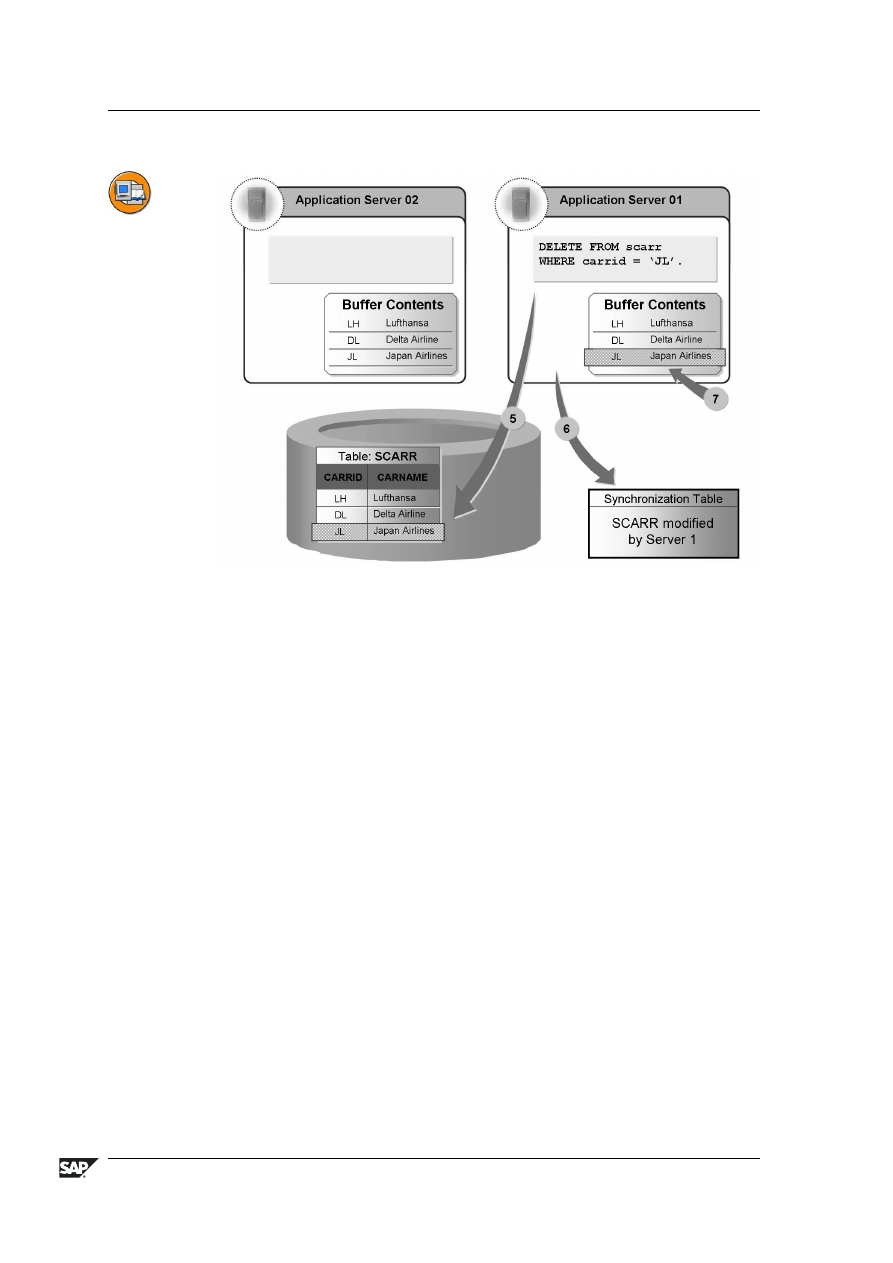ВУЗ: Не указан
Категория: Не указан
Дисциплина: Не указана
Добавлен: 03.04.2021
Просмотров: 2375
Скачиваний: 41
BC430
Lesson: Performance During Table Access
Figure 36: Table buffering
The R/3 System manages and synchronizes the buffers on the individual
application servers. If an application program accesses data of a table, the database
interfaces determines whether this data lies in the buffer of the application server.
If this is the case, the data is read directly from the buffer. If the data is not in the
buffer of the application server, it is read directly from the database and loaded
into the buffer. The buffer can therefore satisfy the next access to this data.
2006/Q2
© 2007 SAP AG. All rights reserved.
83
Unit 3: Performance During Table Access
BC430
Figure 37: Buffer Synchronization 1
Since the buffers reside locally on the application servers, they must be
synchronized after data has been modified in a buffered table. Synchronization
takes place at fixed time intervals that can be set in the system profile. The
corresponding parameter is “rdisp/bufreftime” and defines the length of the
interval in seconds. The value must lie between 60 and 3600. We recommend
a value between 60 and 240.
The following example shows how the local buffers of the system are
synchronized. A system with two application servers is assumed.
Starting situation:
Neither server has yet accessed records of the table SCARR
to be fully buffered. The table therefore does not yet reside in the local buffers
of the two servers.
•
Timepoint 1:
Server 1 reads records from table SCARR on the database.
•
Timepoint 2:
Table SCARR is fully loaded into the local buffer of Server
1. The local buffer of this server is now used for access from Server 1 to
the data of the SCARR table.
84
© 2007 SAP AG. All rights reserved.
2006/Q2
BC430
Lesson: Performance During Table Access
Figure 38: Buffer Synchronization 2
•
Timepoint 3:
A user on Server 2 accesses records of the table. Since the
table does not yet reside in the local buffer of Server 2, the records are read
directly from the database.
•
Timepoint 4:
The SCARR table is loaded into the local buffer of Server 2.
Server 2 therefore also uses its local buffer to access its data when it next
reads the SCARR table.
2006/Q2
© 2007 SAP AG. All rights reserved.
85

Unit 3: Performance During Table Access
BC430
Figure 39: Buffer Synchronization 3
•
Timepoint 5:
A user on Server 1 deletes records from the SCARR tyble and
updates the database.
•
Timepoint 6:
Server 1 writes an entry in the synchronization table.
•
Timepoint 7:
Server 1 updates its local buffer.
86
© 2007 SAP AG. All rights reserved.
2006/Q2
BC430
Lesson: Performance During Table Access
Figure 40: Buffer Synchronization 4
•
Timepoint 8:
A user on Server 2 accesses the deleted records. Since the
SCARR table resides in its local buffer, the access uses this local buffer.
–
Server 2 therefore finds the records although they no longer exist in
the database table.
–
If the same access were made from an application program to Server 1,
this program would recognize that the records no longer exist. At this
time the behavior of an application program depends on the server on
which it is running.
2006/Q2
© 2007 SAP AG. All rights reserved.
87